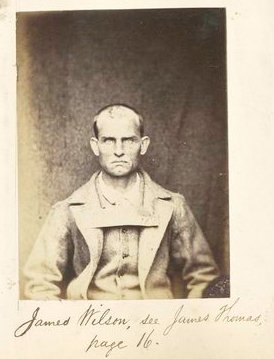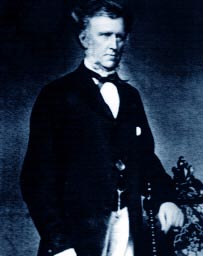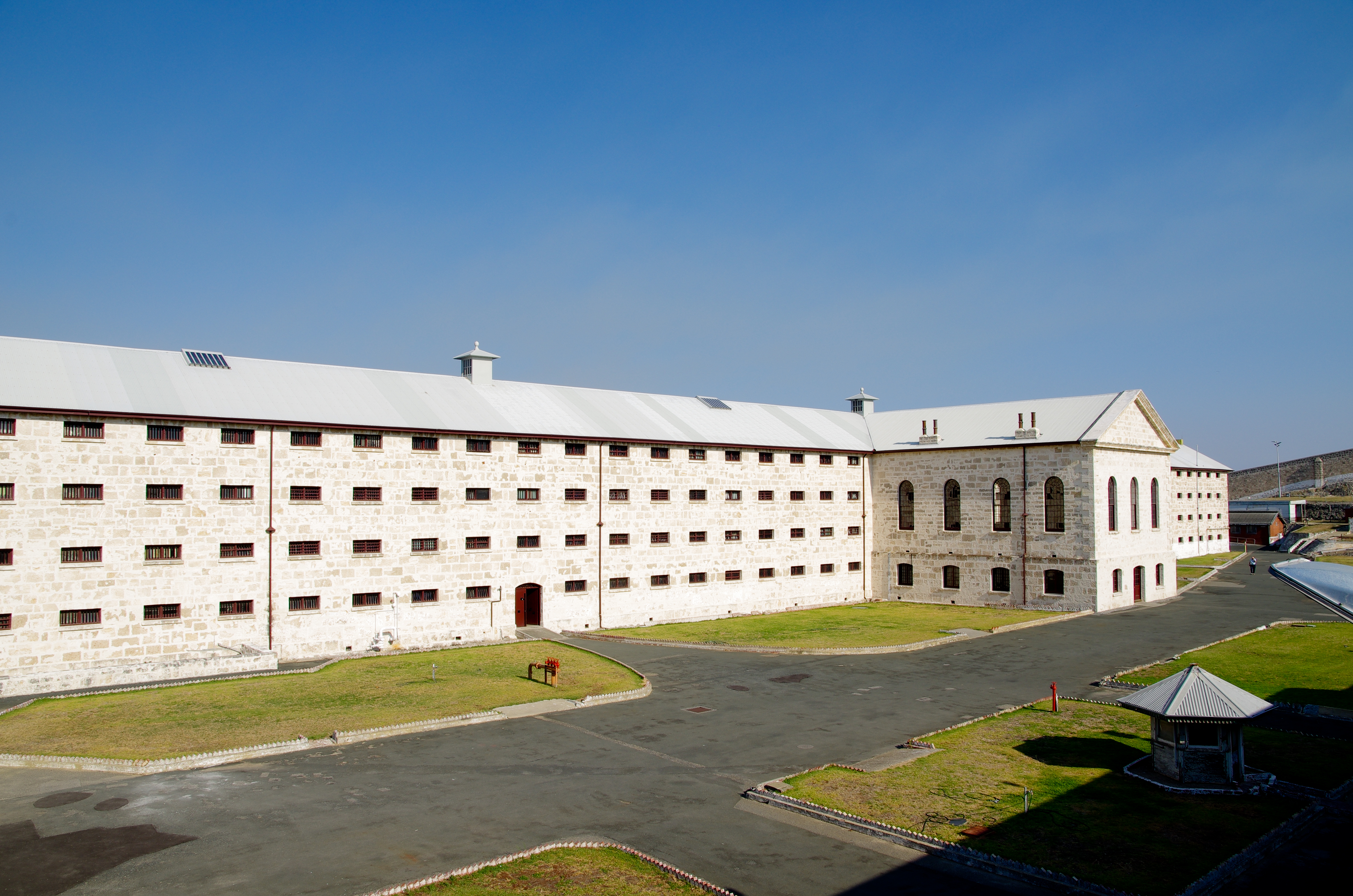|
Kirk's (Pensioner) Cottage (fmr)
Kirk's (Pensioner) Cottage on Stirling Terrace in Toodyay, Western Australia was built between 1852 and 1856 by convict labour. In 1852 urgent accommodation was required for pensioner guards who had accompanied the first shipments of convicts to Western Australia and on to the Toodyay Convict Hiring Depot. Pensioner Guards were retired army or police officers who were given pay and benefits to travel with convicts on the transportation ships from England. Upon arrival most of them continued to serve the Convict Establishment (managed from the Fremantle Prison site) as guards. Land allotments were marked out on the northern portion of Toodyay's town site. Pensioner guard Francis Kirk was allocated this site and he and his family were the first occupants of the modest cottage that was built. As is the case with the nearby Hackett's (Pensioner) Cottage (fmr) its original appearance has been modified. Today the building is at a lower level than the road and is a single storey br ... [...More Info...] [...Related Items...] OR: [Wikipedia] [Google] [Baidu] |
Stirling Terrace, Toodyay
Stirling Terrace is the main street of Toodyay, Western Australia, originally called New Road until 1905. Route description From the intersection of Toodyay Road and Goomalling Toodyay Road, Stirling Terrace travels north-west through the town for , to the west of the Avon River. At the street's north-western end, through-traffic can continue north via Telegraph Road and Bindi Bindi–Toodyay Road to Bindi Bindi, or west via Harper Road and Julimar Road to Chittering. Buildings A considerable number of heritage properties are found on the terrace. The historic frontage of residences, shops and other buildings along Stirling Terrace is collectively termed the Stirling Terrace Streetscape Group. The State Register of Heritage Buildings includes Connor's Mill, Toodyay Public Library (built 1874), the old Toodyay Post Office (designed by George Temple-Poole and built 1897) and the old Toodyay Fire Station (designed by Ken Duncan, built 1938). Buildings listed on the Australi ... [...More Info...] [...Related Items...] OR: [Wikipedia] [Google] [Baidu] |
Toodyay, Western Australia
Toodyay (, nys, Duidgee), known as Newcastle between 1860 and 1910, is a town on the Avon River in the Wheatbelt region of Western Australia, north-east of Perth. The first European settlement occurred in the area in 1836. After flooding in the 1850s, the townsite was moved to its current location in the 1860s. It is connected by railway and road to Perth. During the 1860s, it was home to bushranger Moondyne Joe. History Origin of the name 'Toodyay' The meaning of the name is uncertain, although it is probably indigenous Noongar in origin. In an 1834 reference it is transcribed as "Toodye" while maps in 1836 referred to "Duidgee" The Shire of Toodyay's official website says that " e name Toodyay is believed to be derived from an Aboriginal word 'Duidgee' which means 'place of plenty', referring to the richness and fertility of the area and the reliability of the Avon River". This meaning appears to be a long-standing belief in the local community, but may be based on an in ... [...More Info...] [...Related Items...] OR: [Wikipedia] [Google] [Baidu] |
Convict Era Of Western Australia
The convict era of Western Australia was the period during which Western Australia was a penal colony of the British Empire. Although it received small numbers of juvenile offenders from 1842, it was not formally constituted as a penal colony until 1849. Between 1850 and 1868, 9,721 convicts were transported to Western Australia on 43 convict ship voyages. Transportation ceased in 1868, but it was many years until the colony ceased to have any convicts in its care. Convicts at King George Sound The first convicts to arrive in what is now Western Australia were convicts of the New South Wales penal system, sent to King George Sound in 1826 to help establish a settlement there. At that time, the western third of Australia was unclaimed land known as New Holland. Fears that France would lay claim to the land prompted the Governor of New South Wales, Ralph Darling, to send Major Edmund Lockyer, with troops and 23 convicts, to establish the King George Sound settlement. Lockyer's pa ... [...More Info...] [...Related Items...] OR: [Wikipedia] [Google] [Baidu] |
Western Australia
Western Australia (commonly abbreviated as WA) is a state of Australia occupying the western percent of the land area of Australia excluding external territories. It is bounded by the Indian Ocean to the north and west, the Southern Ocean to the south, the Northern Territory to the north-east, and South Australia to the south-east. Western Australia is Australia's largest state, with a total land area of . It is the second-largest country subdivision in the world, surpassed only by Russia's Sakha Republic. the state has 2.76 million inhabitants percent of the national total. The vast majority (92 percent) live in the south-west corner; 79 percent of the population lives in the Perth area, leaving the remainder of the state sparsely populated. The first Europeans to visit Western Australia belonged to the Dutch Dirk Hartog expedition, who visited the Western Australian coast in 1616. The first permanent European colony of Western Australia occurred following the ... [...More Info...] [...Related Items...] OR: [Wikipedia] [Google] [Baidu] |
Toodyay Convict Hiring Depot (1851)
In 1851, the Toodyay Convict Hiring Depot was set up in the original township of Toodyay, now called West Toodyay. Temporary accommodation for the Enrolled Pensioner Guards was also constructed and surveys were carried out to enable more permanent accommodation to be built close by. The Enrolled Pensioner Guards were men who had either completed their duty of service or who had sustained injury while on active service. They had then volunteered as guards on the ships transporting convicts to Western Australia. Once the men were released from permanent duty, other duties of a peace keeping or military nature were expected of them. Many of these men became warders in charge of convicts. The decision to turn the colony into a penal settlement occurred after a good many settlers petitioned the Government to do so. The colony had struggled to survive during the 1840s. Governor Charles Fitzgerald supported the proposal and the colony became a penal settlement in 1849. The numb ... [...More Info...] [...Related Items...] OR: [Wikipedia] [Google] [Baidu] |
Pensioner Guards
The Pensioner Guards were English military personnel who served on convict transportation ships en route to the Swan River Colony between 1850 and 1868, and were given employment and grants of land on arrival. Their initial employment lasted for six months, or the duration of the voyage, whichever was the longer time. After this they became "pensioners" and had to serve 12 days per year as well as whenever called upon. They paraded annually in Perth at the Pensioner Barracks. Part of their purpose was to fulfil a promise by the British government to send free settlers to the colony to dilute the convicts, and to maintain law and order in the colony. Many enlisted in the British Army as boys, around 15–17 years of age, and served in many parts of the world including India, Afghanistan, China, Crimea for about 21 years before being pensioned off. This meant a number of guards were under 40 years of age and had young families when they came to Western Australia. As an incentive t ... [...More Info...] [...Related Items...] OR: [Wikipedia] [Google] [Baidu] |
Fremantle Prison
Fremantle Prison, sometimes referred to as Fremantle Gaol or Fremantle Jail, is a former Australian prison and World Heritage Site in Fremantle, Western Australia. The site includes the prison cellblocks, gatehouse, perimeter walls, cottages, and tunnels. It was initially used for convicts transported from Britain, but was transferred to the colonial government in 1886 for use for locally-sentenced prisoners. Royal Commissions were held in 1898 and 1911, and instigated some reform to the prison system, but significant changes did not begin until the 1960s. The government department in charge of the prison underwent several reorganisations in the 1970s and 1980s, but the culture of Fremantle Prison was resistant to change. Growing prisoner discontent culminated in a 1988 riot with guards taken hostage, and a fire that caused $1.8 million worth of damage. The prison closed in 1991, replaced by the new maximum-security Casuarina Prison. The prison was administered by a comp ... [...More Info...] [...Related Items...] OR: [Wikipedia] [Google] [Baidu] |
Francis Kirk
Francis Kirk (1869) was one of a number of Enrolled Pensioner Guards (EPGs) who came to the Swan River Colony between 1850 and 1868, to guard and oversee the work of the prisoners transported to Western Australia. Early life Kirk was born at Achalive, County Tyrone . On 28 November 1823, aged 16 years, he enlisted with the British Army at Glasgow and served as a private for 22 years with the 8th Royal Artillery. His service included eight years in Corfu. He was discharged at Woolwich on 13 October 1846 with a pension. Kirk is recorded as exhibiting exemplary conduct and was awarded four Good Conduct badges. He is described as being in height, with fair hair and blue eyes.Broomhall, F.H., The Veterans. A History of the Enrolled Pensioner Force in Western Australia, 1850 – 1880, Hesperian Press, Victoria Park, 1989, p. B161. To Western Australia Kirk, with his wife Mary and their five-year-old son Francis, left England on 30 December 1850 on the transport ''Mermaid''. The boa ... [...More Info...] [...Related Items...] OR: [Wikipedia] [Google] [Baidu] |
Hackett's (Pensioner) Cottage (fmr)
Hackett's (Pensioner) Cottage is located on Stirling Terrace in Toodyay, Western Australia and was built around 1855 by convict labour. In 1852 urgent accommodation was required for pensioner guards who had accompanied the first shipments of convicts to Western Australia and on to the Toodyay Convict Hiring Depot. Pensioner Guards were retired army or police officers who were given pay and benefits to travel with convicts on the transportation ships from England. Upon arrival most of them continued to serve the Convict Establishment (managed from the Fremantle Prison site) as guards. Land allotments were marked out on the northern portion of Toodyay's town site. This cottage, built for pensioner guard Owen Hackett, originally had two rooms with a shingle roof that is still intact under the newer corrugated iron roofing. Hackett arrived from Ireland in 1853 with his wife and two children. Five more children were born whilst they lived here. In 1862 Joseph T. Monger bought t ... [...More Info...] [...Related Items...] OR: [Wikipedia] [Google] [Baidu] |
Flemish Bond
Brickwork is masonry produced by a bricklayer, using bricks and Mortar (masonry), mortar. Typically, rows of bricks called ''Course (architecture), courses'' are laid on top of one another to build up a structure such as a brick wall. Bricks may be differentiated from blocks by size. For example, in the UK a brick is defined as a unit having dimensions less than and a block is defined as a unit having one or more dimensions greater than the largest possible brick. Brick is a popular medium for constructing buildings, and examples of brickwork are found through history as far back as the Bronze Age. The fired-brick faces of the ziggurat of ancient Dur-Kurigalzu in Iraq date from around 1400 BC, and the brick buildings of ancient Mohenjo-daro in Pakistan were built around 2600 BC. Much older examples of brickwork made with dried (but not fired) bricks may be found in such ancient locations as Jericho in Palestine, Çatalhöyük, Çatal Höyük in Anatolia, and Mehrgarh in Pakis ... [...More Info...] [...Related Items...] OR: [Wikipedia] [Google] [Baidu] |
Buildings And Structures In Toodyay, Western Australia
A building, or edifice, is an enclosed structure with a roof and walls standing more or less permanently in one place, such as a house or factory (although there's also portable buildings). Buildings come in a variety of sizes, shapes, and functions, and have been adapted throughout history for a wide number of factors, from building materials available, to weather conditions, land prices, ground conditions, specific uses, prestige, and aesthetic reasons. To better understand the term ''building'' compare the list of nonbuilding structures. Buildings serve several societal needs – primarily as shelter from weather, security, living space, privacy, to store belongings, and to comfortably live and work. A building as a shelter represents a physical division of the human habitat (a place of comfort and safety) and the ''outside'' (a place that at times may be harsh and harmful). Ever since the first cave paintings, buildings have also become objects or canvasses of much artis ... [...More Info...] [...Related Items...] OR: [Wikipedia] [Google] [Baidu] |
Buildings And Structures Built By Convicts In Western Australia
A building, or edifice, is an enclosed structure with a roof and walls standing more or less permanently in one place, such as a house or factory (although there's also portable buildings). Buildings come in a variety of sizes, shapes, and functions, and have been adapted throughout history for a wide number of factors, from building materials available, to weather conditions, land prices, ground conditions, specific uses, prestige, and aesthetic reasons. To better understand the term ''building'' compare the list of nonbuilding structures. Buildings serve several societal needs – primarily as shelter from weather, security, living space, privacy, to store belongings, and to comfortably live and work. A building as a shelter represents a physical division of the human habitat (a place of comfort and safety) and the ''outside'' (a place that at times may be harsh and harmful). Ever since the first cave paintings, buildings have also become objects or canvasses of much artistic ... [...More Info...] [...Related Items...] OR: [Wikipedia] [Google] [Baidu] |






